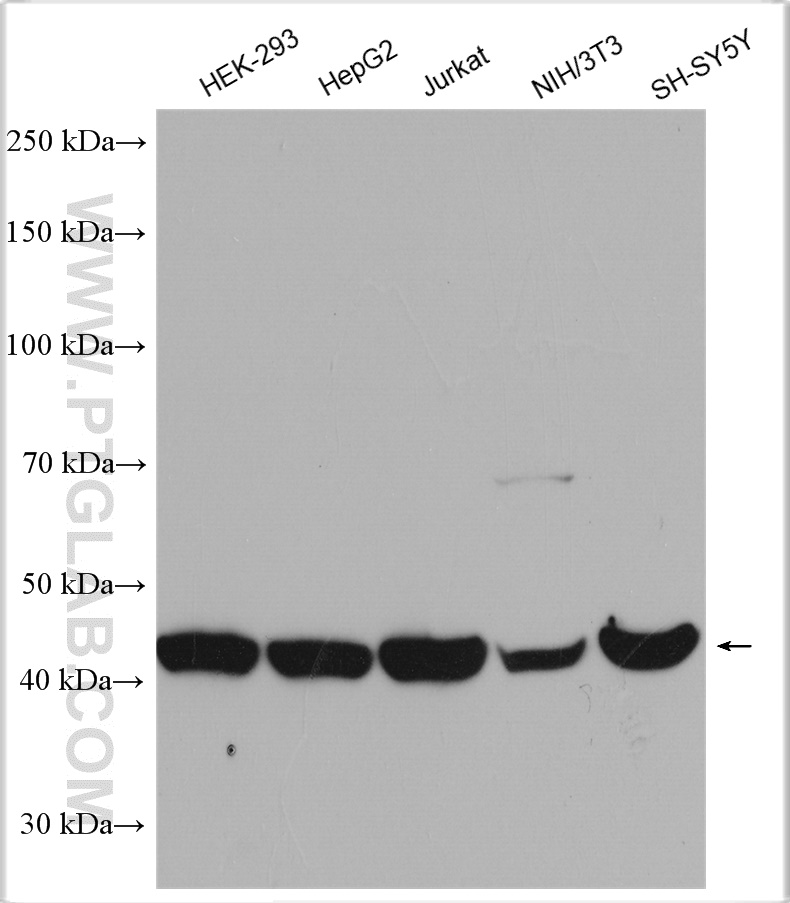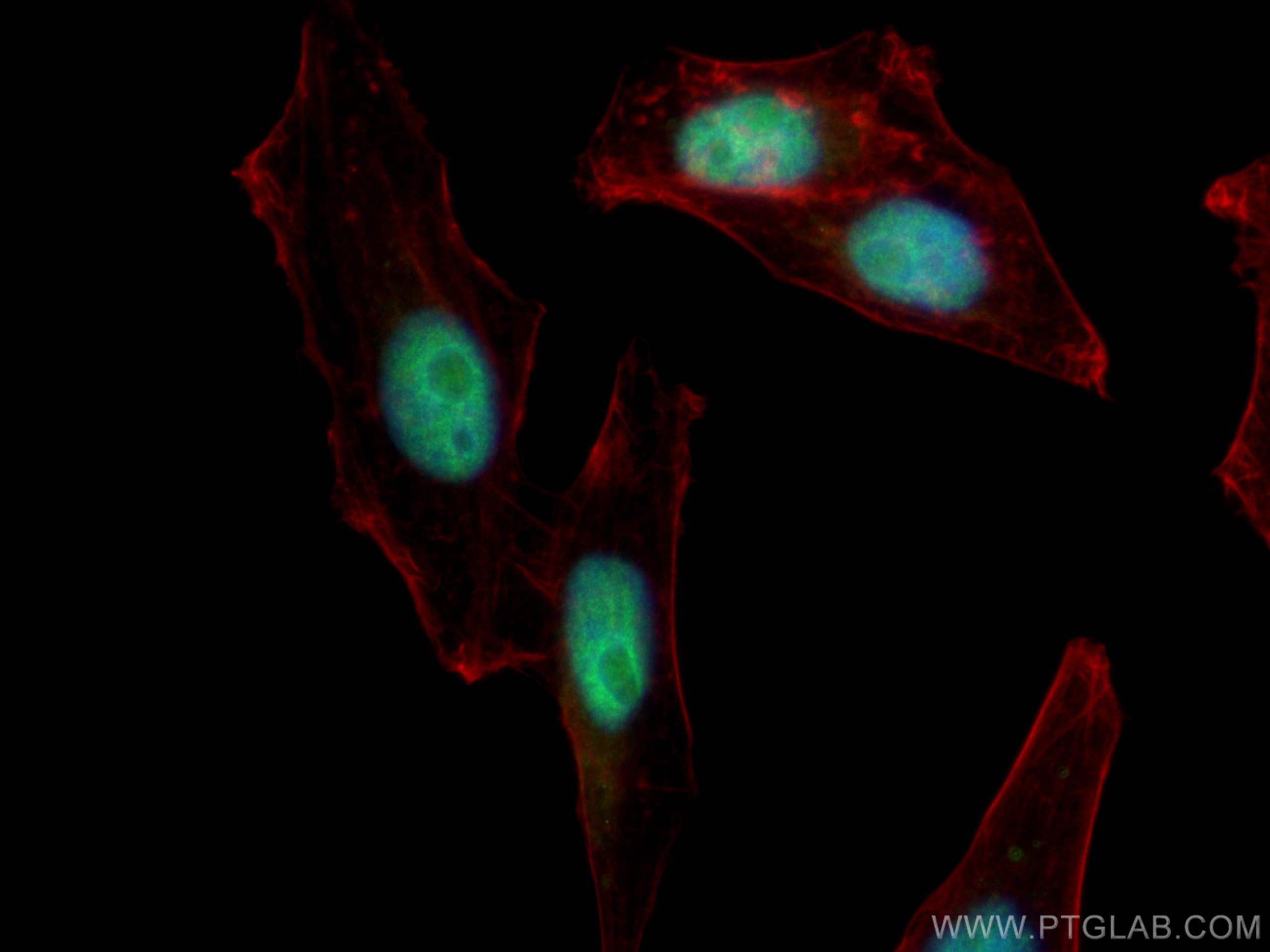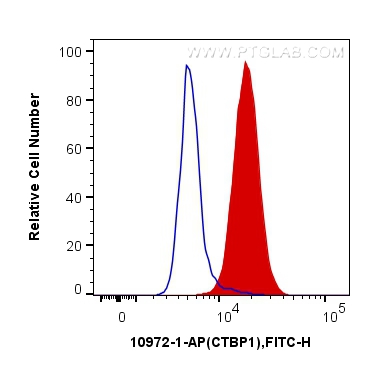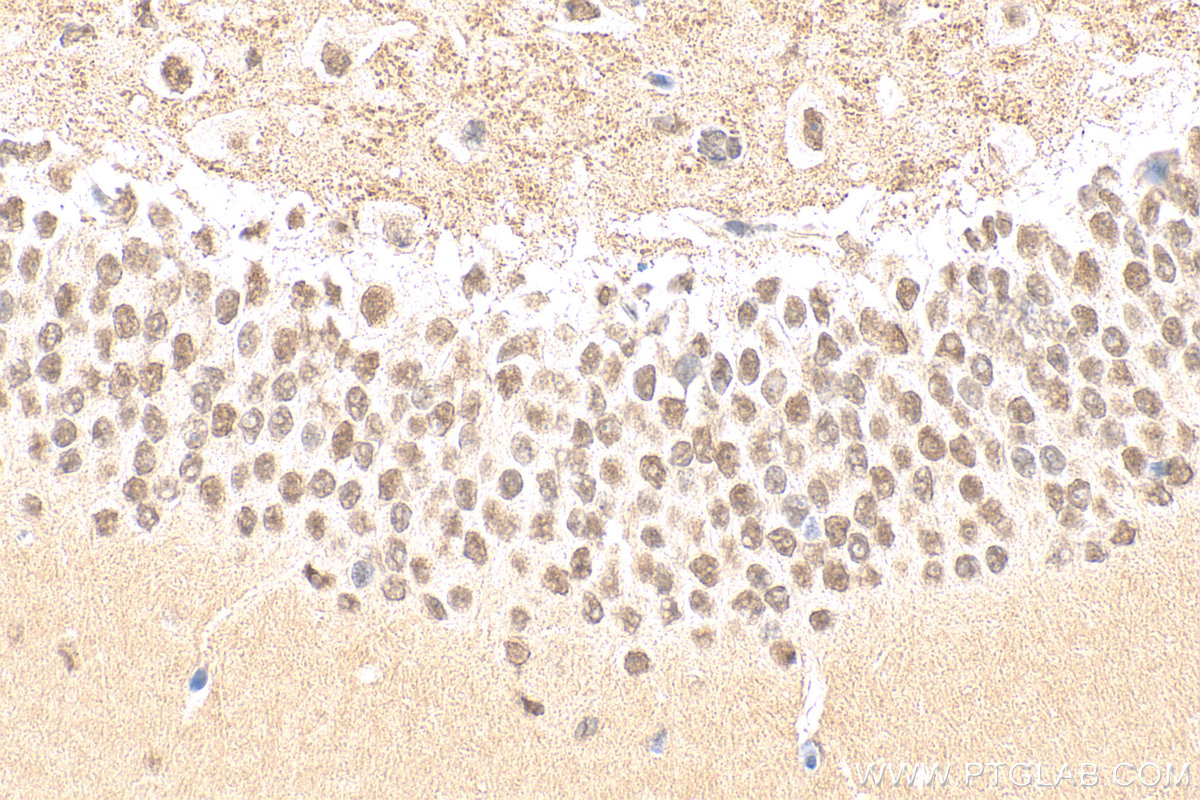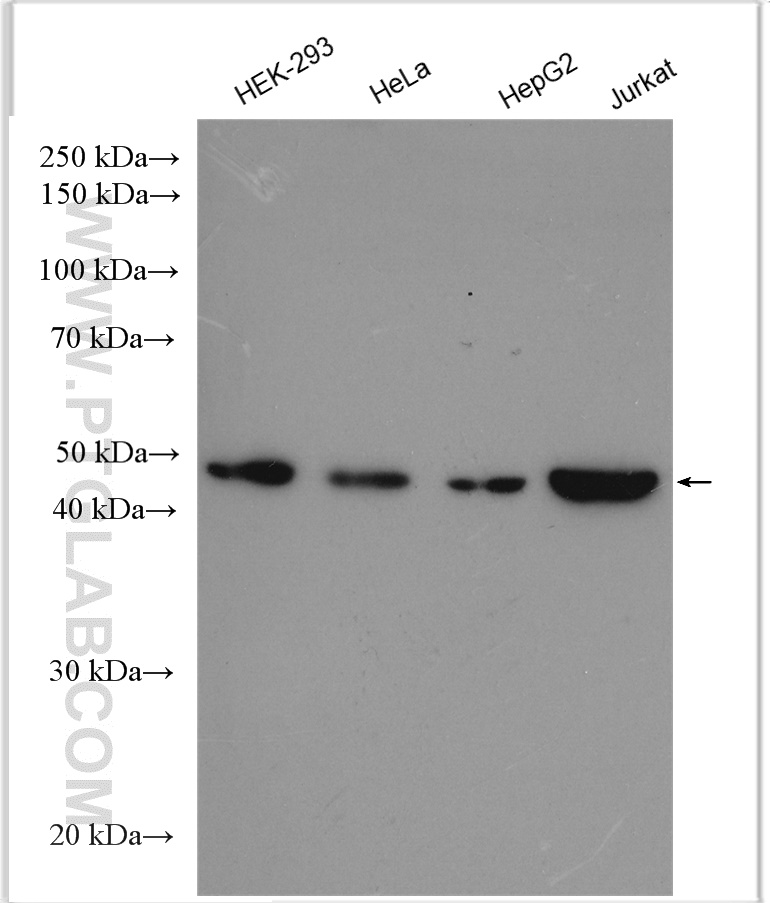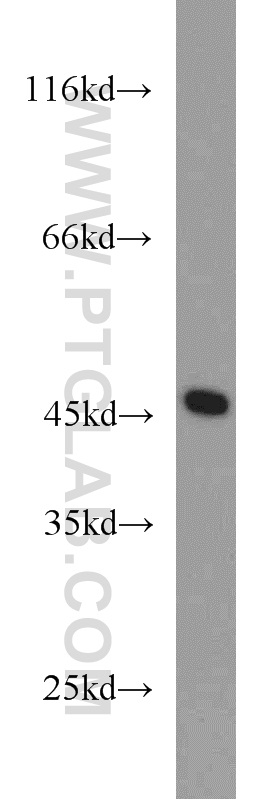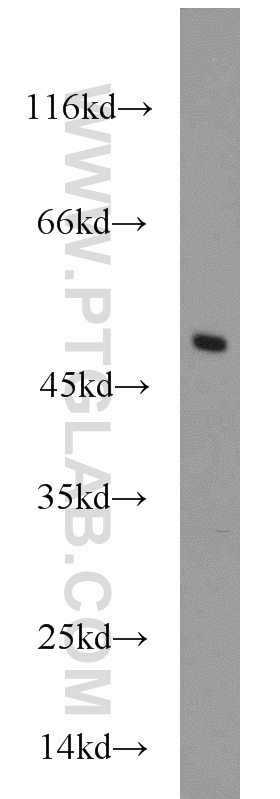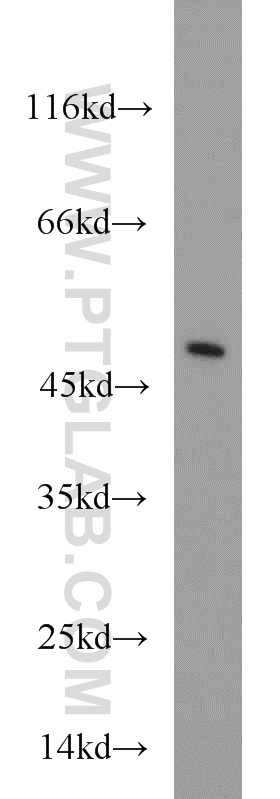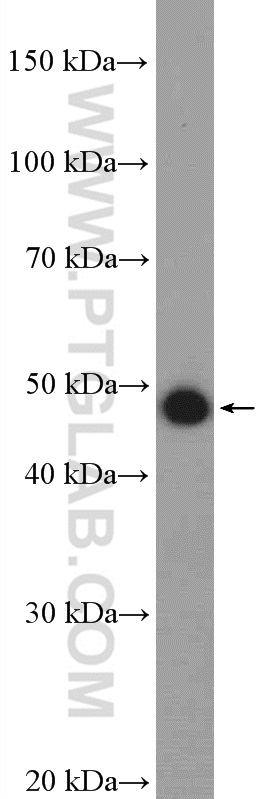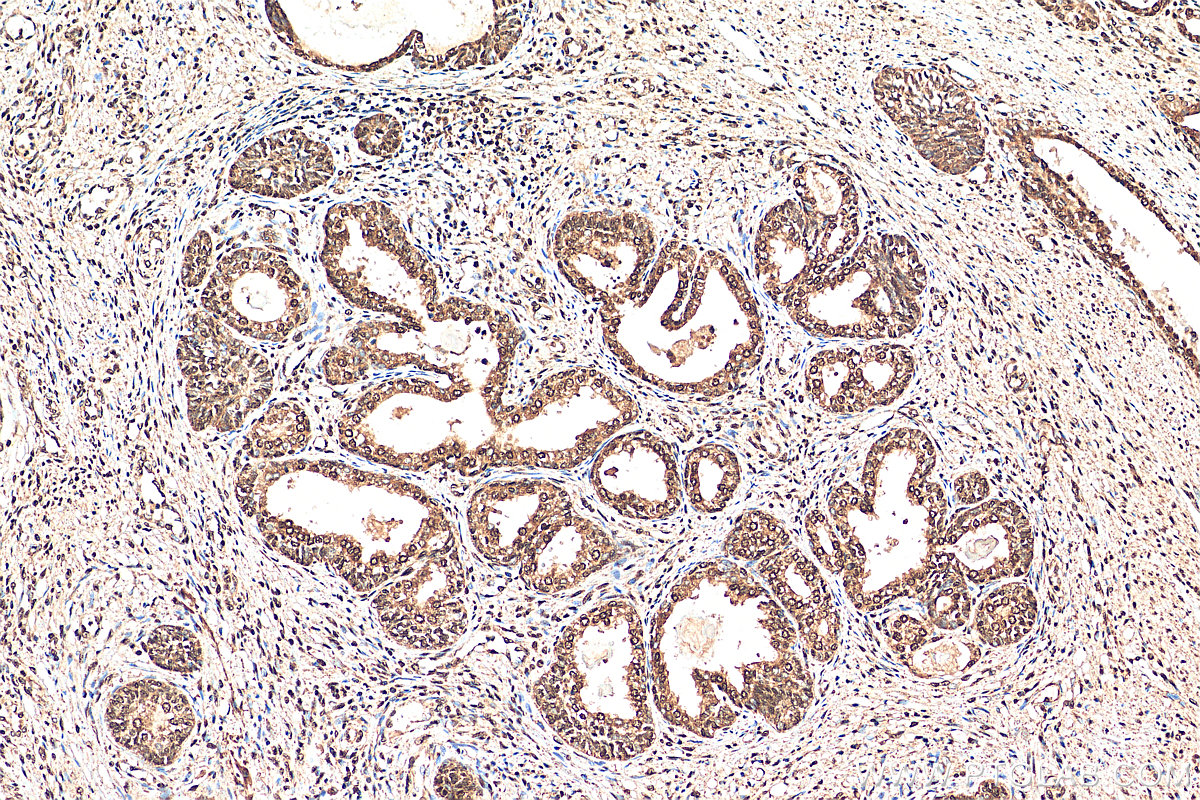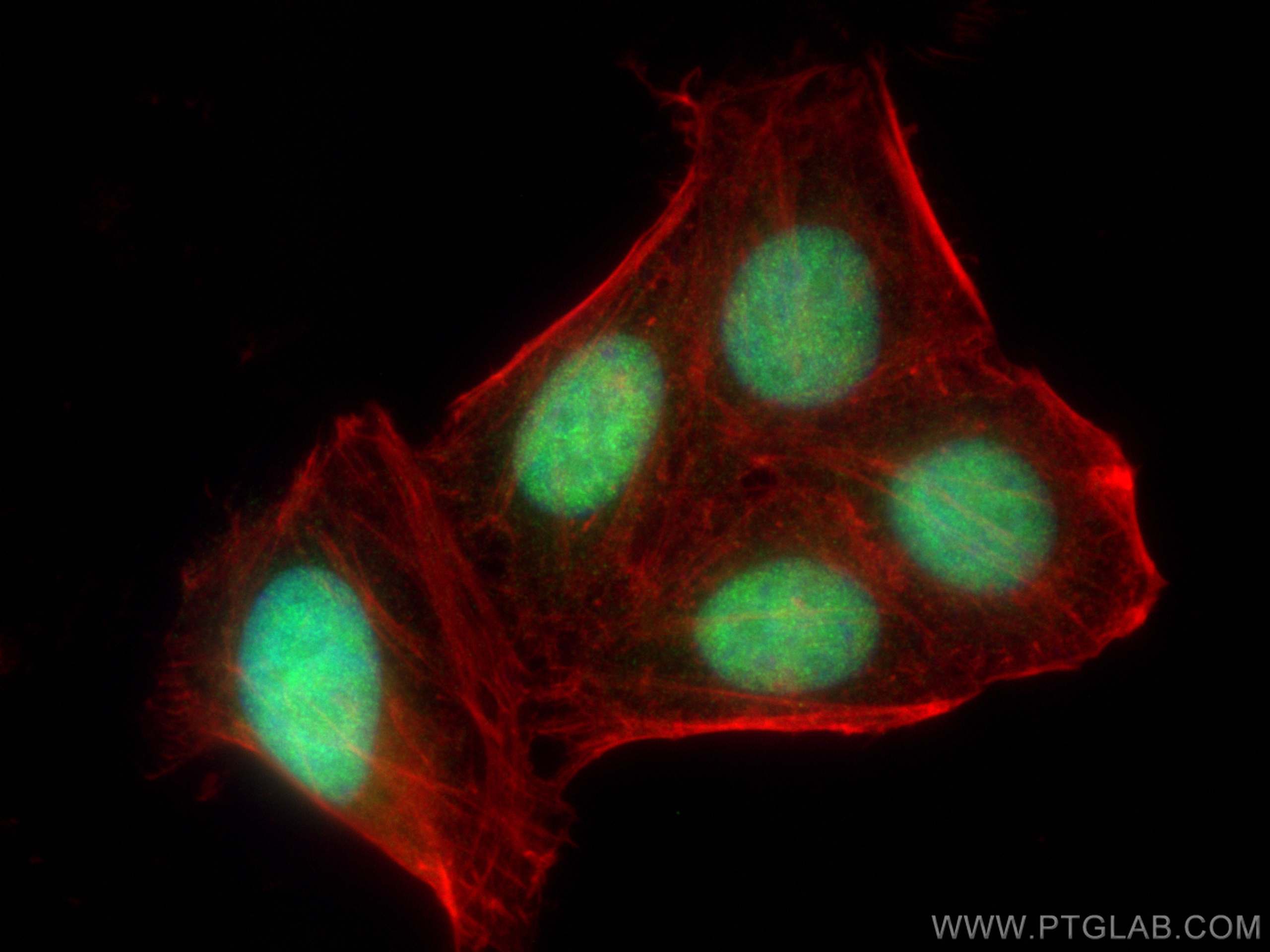验证数据展示
经过测试的应用
| Positive WB detected in | HEK-293 cells, mouse skeletal muscle tissue, mouse thymus tissue, mouse brain tissue, HepG2 cells, Jurkat cells, NIH/3T3 cells, SH-SY5Y cells, HeLa cekks |
| Positive IP detected in | mouse brain tissue |
| Positive IHC detected in | human prostate cancer tissue, mouse brain tissue Note: suggested antigen retrieval with TE buffer pH 9.0; (*) Alternatively, antigen retrieval may be performed with citrate buffer pH 6.0 |
| Positive IF/ICC detected in | HepG2 cells |
| Positive FC (Intra) detected in | HepG2 cells |
推荐稀释比
| 应用 | 推荐稀释比 |
|---|---|
| Western Blot (WB) | WB : 1:1000-1:8000 |
| Immunoprecipitation (IP) | IP : 0.5-4.0 ug for 1.0-3.0 mg of total protein lysate |
| Immunohistochemistry (IHC) | IHC : 1:50-1:500 |
| Immunofluorescence (IF)/ICC | IF/ICC : 1:50-1:500 |
| Flow Cytometry (FC) (INTRA) | FC (INTRA) : 0.40 ug per 10^6 cells in a 100 µl suspension |
| It is recommended that this reagent should be titrated in each testing system to obtain optimal results. | |
| Sample-dependent, Check data in validation data gallery. | |
产品信息
10972-1-AP targets CTBP1 in WB, IHC, IF/ICC, FC (Intra), IP, CoIP, ELISA applications and shows reactivity with human, mouse samples.
| 经测试应用 | WB, IHC, IF/ICC, FC (Intra), IP, ELISA Application Description |
| 文献引用应用 | WB, IF, CoIP |
| 经测试反应性 | human, mouse |
| 文献引用反应性 | human, mouse |
| 免疫原 | CTBP1 fusion protein Ag1425 种属同源性预测 |
| 宿主/亚型 | Rabbit / IgG |
| 抗体类别 | Polyclonal |
| 产品类型 | Antibody |
| 全称 | C-terminal binding protein 1 |
| 别名 | EC:1.1.1.-, C-terminal-binding protein 1, CTBP, BARS |
| 计算分子量 | 48 kDa |
| 观测分子量 | 48 kDa |
| GenBank蛋白编号 | BC011655 |
| 基因名称 | CTBP1 |
| Gene ID (NCBI) | 1487 |
| RRID | AB_2086628 |
| 偶联类型 | Unconjugated |
| 形式 | Liquid |
| 纯化方式 | Antigen affinity purification |
| UNIPROT ID | Q13363 |
| 储存缓冲液 | PBS with 0.02% sodium azide and 50% glycerol pH 7.3. |
| 储存条件 | Store at -20°C. Stable for one year after shipment. Aliquoting is unnecessary for -20oC storage. |
背景介绍
CTBP1, also named as C-terminal-binding protein 1, is a 440 amino acid protein, which belongs to the D-isomer specific 2-hydroxyacid dehydrogenase family. CTBP1 is a cellular phosphoprotein that associates with various proteins and functions as a corepressor of transcription. CTBP1 and the related protein CTBP2 are characterized as C-terminal binding protein of adenovirus E1A, and they preferentially associate with the E1A via a 5-amino acid motif, PLDLS, to repress E1A induced oncogenesis and cellular transformation. CTBP1 is expressed from embryo to adult, but CTBP2 is mainly expressed during embryogenesis.
实验方案
| Product Specific Protocols | |
|---|---|
| WB protocol for CTBP1 antibody 10972-1-AP | Download protocol |
| IHC protocol for CTBP1 antibody 10972-1-AP | Download protocol |
| IF protocol for CTBP1 antibody 10972-1-AP | Download protocol |
| IP protocol for CTBP1 antibody 10972-1-AP | Download protocol |
| Standard Protocols | |
|---|---|
| Click here to view our Standard Protocols |
发表文章
| Species | Application | Title |
|---|---|---|
Nat Commun CDYL suppresses epileptogenesis in mice through repression of axonal Nav1.6 sodium channel expression. | ||
Nat Commun ZNF516 suppresses EGFR by targeting the CtBP/LSD1/CoREST complex to chromatin.
| ||
Oncogene RBBP8/CtIP suppresses P21 expression by interacting with CtBP and BRCA1 in gastric cancer. | ||
Mol Oncol Role of hepatoma-derived growth factor in promoting de novo lipogenesis and tumorigenesis in hepatocellular carcinoma. | ||
Mol Carcinog Role of miR-214 in regulation of β-catenin and the malignant phenotype of melanoma.
| ||
Front Physiol Ling-gui-zhu-gan granules reduces obesity and ameliorates metabolic disorders by inducing white adipose tissue browning in obese mice |
